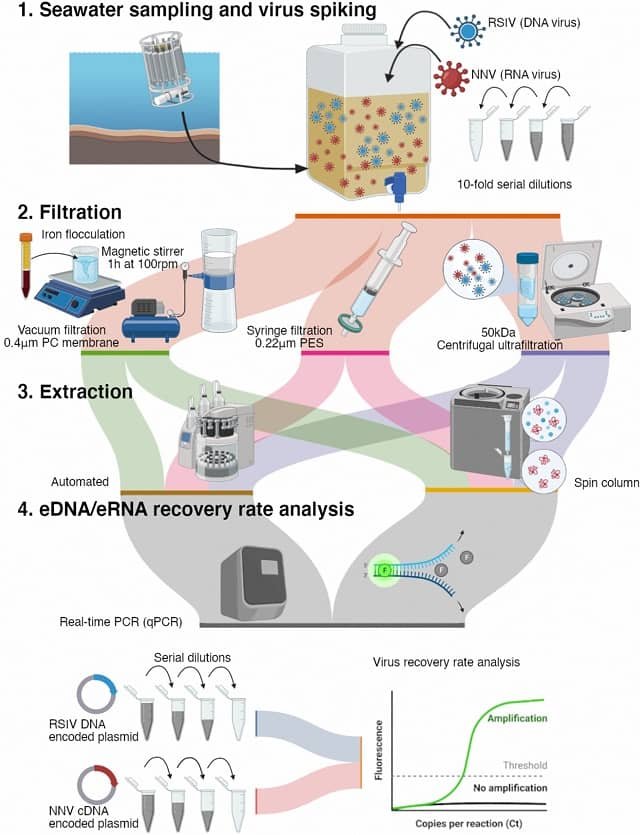
The increasing human population demands nutritious food, and salmon aquaculture offers a promising solution. However, the salmon industry faces sustainability hurdles, from environmental impact to fish welfare. This is where genome editing comes into play, wielding the power of precision breeding to address these challenges.
A study conducted by scientists at the Institute of Marine Research and the University of Bergen achieved the first base editing in an aquaculture fish species: Atlantic salmon. Base editing allows specific and targeted changes in the fish’s DNA, paving the way for the introduction of beneficial traits.
Genome editing
Genome editing presents a promising approach for precision breeding, where specific changes enable the introduction of genetic traits that would be time-consuming and difficult to achieve through conventional breeding.
In other words, genetic engineering allows for the design of aquaculture fish that are more resistant to diseases, mature at a later age, have improved growth and better nutritional status.
Genome editing has been used to accelerate the domestication of Pacific mackerel (Scomber japonicus), and has been employed to improve growth rate and disease resistance in fish and oysters.
Recently, an international team of scientists published a guide to assess the risk-benefit of genome editing in aquaculture species.
CBE AncBE4max of the fourth generation
In the first study, the researchers focused on the pigmentation gene Slc45a2, to create albino salmon. They employed CBE AncBE4max of the fourth generation to convert C to T in the solute carrier family member 45 gene.
The scientists injected salmon embryos with a cocktail of molecules: AncBE4max mRNA (the base editor) and gRNA (a guide molecule directed to the specific gene). This targeted “surgical editing” successfully transformed a C nucleotide into a T, introducing a premature stop codon and ultimately turning the salmon albino.
Through high-throughput sequencing, the scientists confirmed the efficiency of the editing, reaching up to 89% in one individual, with an average of 50-66% depending on the concentration of the base editor.
Stay Always Informed
Join our communities to instantly receive the most important news, reports, and analysis from the aquaculture industry.
However, “despite the impressive C-to-T conversion rate, several off-target effects were noticeable in our data, such as indels, bystander edits, and incorrect conversions,” the scientists cautioned.
CRISPR/Cas9
The study also explored CRISPR/Cas9, another genome editing technique that has been applied in aquaculture species. The scientists used it to insert precise point mutations within the Slc45a2 gene. Interestingly, the efficiency of this insertion varied depending on the location of the mutation within the target site.
The CRISPR/Cas system consists of a pre-designed RNA molecule that guides a CRISPR-associated endonuclease to the target site of interest. The nuclease initiates a double-strand break (DSB) of the DNA, which is subsequently repaired by the cell’s endogenous repair mechanisms.
The potential of genome editing in salmon farming
These groundbreaking results demonstrate the immense potential of genome editing in salmon aquaculture. By creating fish with increased disease resistance, delayed maturation for optimal growth, or other beneficial traits, we can work towards a more sustainable industry:
- Reduced environmental impact: Disease-resistant fish require fewer antibiotics and chemicals, minimizing pollution.
- Improved fish welfare: By optimizing growth rates and delaying maturation, we can create shorter, less stressful lives for farmed salmon.
- Enhanced nutrition: Salmon with specific nutrient profiles can contribute to healthier diets for consumers.
However, the road ahead is not without challenges. Public perception, regulatory frameworks, and ethical considerations still need to be addressed. Nevertheless, the success of this study marks a significant leap forward in salmon aquaculture.
Conclusion
“The application of genome editing tools that allow precise changes in this species is a step towards precision breeding in aquaculture and the introduction of traits that promote a more sustainable industry,” the researchers concluded.
They also indicated that despite the off-target effects, the results of the study suggested that CBE AncBE4max offers a simple and efficient way to convert single bases in salmon.
With continued research and responsible development, genome editing can help ensure a future where delicious and nutritious salmon thrive alongside a healthy planet.
The study was carried out within the framework of the TUNESAL project, funded by the Research Council of Norway.
Contact
Rolf Brudvik Edvardsen
Institute of Marine Research, Bergen, Norway
Email: rolfbe@hi.no
Reference (open access)
Mari Raudstein, Anne Hege Straume, Erik Kjærner-Semb, Morten Barvik, Ståle Ellingsen, Rolf Brudvik Edvardsen. 2024. Highly efficient in vivo C-to-T base editing in Atlantic salmon (Salmo salar) – A step towards aquaculture precision breeding, Aquaculture, Volume 581, 2024, 740487, ISSN 0044-8486,
https://doi.org/10.1016/j.aquaculture.2023.740487.
Editor at the digital magazine AquaHoy. He holds a degree in Aquaculture Biology from the National University of Santa (UNS) and a Master’s degree in Science and Innovation Management from the Polytechnic University of Valencia, with postgraduate diplomas in Business Innovation and Innovation Management. He possesses extensive experience in the aquaculture and fisheries sector, having led the Fisheries Innovation Unit of the National Program for Innovation in Fisheries and Aquaculture (PNIPA). He has served as a senior consultant in technology watch, an innovation project formulator and advisor, and a lecturer at UNS. He is a member of the Peruvian College of Biologists and was recognized by the World Aquaculture Society (WAS) in 2016 for his contribution to aquaculture.




